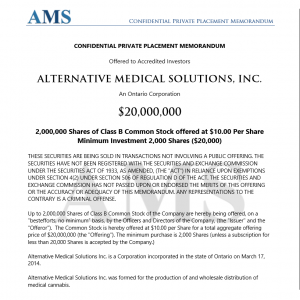While some legislators called for $3 billion to be appropriated for DPA costs, the CARES Act included only a third of that quantity. Some news reports suggest that more spending steps might be tough https://www.healthcarebusinesstoday.com/how-to-keep-your-clients-happy/ to survive the Senate. Then and now, the US system of federal government's many veto points make emergency action harder than under parliamentary or authoritarian systems. A work-around, as social scientists Sarah Quinn and Suzanne Mettler have actually argued, is so-called off-balance sheet money production. The RFC, for example, was enabled to borrow money from the Treasury and the capital markets, and then purchase relief and mobilization efforts that would eventually create a return for taxpayers, all while skating previous austerity hawks determined to cut or freeze government costs.
Though this allows even more financial firepower to be brought to bear, it comes with its own expenses. As social researchers Chris Humphrey, Eugnia C. Heldt, and Henning Schmidtke have actually found, contemporary advancement banks have to pay attention to the impulses of Wall Street and the credit score agencies that rate their bondsskewing their priorities towards the preferences of private finance. In some ways, the US is there already, as much of the emergency response is run by the Federal Reserve, a self-governing company that is partially governed by personal banks and does not have the democratic accountability of other executive branch companies.
A rebooted RFC might solve that issue. During the New Offer and World War II, it brought democratic accountability to a process that otherwise would have moved major powers to finance. Initially, when the RFC was established under Hoover, the Fed was on its board. However, in the very first couple of months of operation, the Fed's preference for austerity and hands-off interference with personal management hindered its reliable operation. By the summer season, the more competent and relief-friendly members of the board were able to get the Fed off, acquiring the majority and holding it thereafter. Unlike the Fed, the RFC can and did force out bad supervisors and need strong labor standards in personal companies taking advantage of loansall things the bloated monetary sector might gain from today.
Finally, as I've argued in Politico, the RFC's initial year of operation (in an election year!) offers lessons for how Congress can examine Trump's incompetence and venality. The most consequential aspects of the RFCthe kinds of tasks it picked to money, the way its board was structured to accomplish bipartisan balance, prevent cronyism, and conquer the timidity of a Republican presidentwere pushed by Democrats in your house majority and Senate minority, whose votes were required to license creation of the corporation. This particular constellation of power is identical to the one today, and demonstrates how bipartisan power-sharing on a brand-new RFC board might enable more oversight.

In 1975, over concerns that smaller universities and colleges were struggling with low enrollment due to the fallout from the oil shocks and financial crisis, Rep (What can i do with a degree in finance). Peter Peyser (R-NY) introduced an expense to create a College Reconstruction Financing Corporation. More recently, after the devastation of Cyclone Irma in 2016, Sen. Bernie Sanders proposed a Puerto Rico Reconstruction Financing Corporation that would buy up bonds from the island's having a hard time local governments and corporations. And, in March 2020, Rep. Danny Davis (D-IL) outlined a strategy for an RFC-style National Infrastructure Bank that would deal with the country's $4. 6 trillion deficit in public works.

Here, history is also a guide. When started, the RFC was slated to run for only a year, with a focus mostly on banks. But absolutely nothing succeeds like success, which first year illustrated how efficient federal government could be: The RFC and its subsidiaries would ultimately have a hand in almost every element of market. A Health or Food Supply Restoration Corporation in 2020 might once again demonstrate the concept's value, leading the way for a broader Green Reconstruction Corporation in 2021.
The development of the Restoration Finance Business was the first substantial action required to fight the Great Anxiety. It was created to provide support for little banks which the Federal Reserve could not help. In addition, the Federal Reserve was a conservative institution, and its worry of inflation made it extremely reluctant to increase the cash supply. As an outcome, the Congress passed the Restoration Financing Corporation Act of 1932. The act was passed with broad support from both Democrats and Republicans. The Act was signed into law by President Hoover on January 22, 1932. It started to lend to small banks.
The Best timeshare units Guide To Which Of These Is The Best Description Of Personal Finance
The RFC could not just loan to banks that it Federal Reserve could not, however also could utilize collateral that the Federal Reserve could not. The RFC raised a preliminary $500 million by selling bonds the US Treasury, that rapidly grew to $1. 5 billion. In its very first year the RFC lent $1. 5 Billion, and through 1941 the RFC lent an overall of $9. 465 Billion.
is Henry Kaufman Teacher of Financial Institutions, Columbia Business School, a research partner of the National Bureau of Economic Research, and a going to scholar at the International Monetary Fund. is Hermann Moyse, Jr./ Louisiana Bankers Association Chair of Banking, Louisiana State University and Senior Citizen Fellow, The Wharton School. is William F. Podlich Teacher of Economics, Claremont Mc, Kenna College. is a graduate of Claremont Mc, Kenna College. Copyright 2013 Elsevier Inc. All rights scheduled.
Jesse Jones with President Franklin Roosevelt In 1929, the country started its steep slide into the depths of the Great Anxiety. In 1931, when it emerged that two stopping working Houston banks will bring down all the others in the location, Jones called the city's leading businessmen to his office to work out a plan that would permit the steady banks and a number of local companies to rescue the 2 failing banks. As an outcome of Jones's leadership and financial dexterity, no banks in Houston stopped working during the Great Depression. This amazing achievement captured the attention of President Herbert Hoover, who quickly selected Jones to the Reconstruction Finance Corporation (RFC).
When Franklin D. Roosevelt became president, he broadened the RFC's powers and elevated Jones to chairman. Quickly, the Restoration Finance Corporation became a main pillar of Roosevelt's New Deal. As chairman, Jones directed billions of dollars towards needy banks, markets, farmers and citizens - How long can you finance a used car. He had nearly complete autonomy in deciding where the government's cash should go, and viewed these loans as an investment by America to its individuals. The RFC did not just make grants or loans, it likewise purchased stock in having a hard time enterprises, giving the government a voice in how those business were run. Jones had $50 billion at his discretion, an extraordinary amount that provided him immense power.